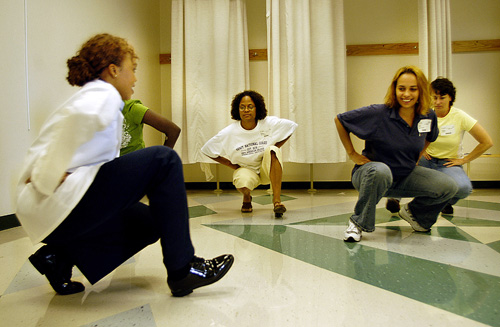Royal Thai Army firing an M198 Howitzer, 155mm.
The 90-pound projectile jumps from the gun at nearly a half-mile per second.
It can hit a target 18 miles away in less than a minute.
Artillery comes in many shapes and sizes, but the M198 is typical. It fires a 90-pound shell anywhere from direct-fire right in front of the gun to nearly 20 miles away. A good crew can fire two rounds per minute for hours or up to four rounds in a minute for a short period. The most common round is HE, High Explosive: 90 pounds of detonator, explosive and a case designed to break into sharp fragments. The round leaves the gun at more than 2,200-feet-per-second or almost a half-mile per second. The shell can fly to a target 18 miles away in less than 45 seconds. The kill radius of the blast is 50 meters, the casualty radius is 100 meters.
Drop a 155mm shell from an M198 on a football field in the middle of the fifty-yard line and both teams including the coaches and players on the bench, the camera crews, the refs and everyone with midfield seats near the field will die. Injuries from shrapnel and blast will maim hundreds more in the stands and blow all the windows out of the fancy skyboxes.
But the most important specification is the price. A brand new howitzer costs just over a half-million dollars. High explosive rounds cost about $500 each. So a million bucks buys a brand-new howitzer and a thousand rounds of ammo.
Relative to guided missiles, artillery is cheap and deadly. Dictators on a budget who cannot afford aircraft and high-tech missiles can buy lots of artillery.
And they do.
This cheap, traditional weapon is the key to why the malignant lunatic leader of North Korea holds the civilized world right by the short hairs. Kim Jong Un has thousands of artillery pieces and rocket launchers pointed at Seoul, the capital of South Korea. If we attack North Korea, his guns start firing at Seoul. More than 20 million people live in the Seoul metropolitan area and tens of thousands of Americans are also in range of those guns.
Unlike long range missiles and aircraft, there is nothing that can stop an artillery shell in flight. And there is no effect early warning system. If North Korea starts firing artillery at Seoul the first salvo of shells and missiles will hit in one minute after the command to fire. Crowded streets, markets, tall glass buildings, apartment complexes, and stadiums are perfect artillery targets.
When armies want to stop artillery, they have to find a way to blow up the enemy guns. Guns can be attacked by aircraft and by artillery, called counter battery fire. But there are too many North Korean guns. Even if we win a war against North Korea, Seoul would be rubble.
Although accuracy hardly matters when firing artillery against civilians on streets and in glass buildings, modern guns are very accurate. A well-trained crew will put their first round they fire within the 50-meters of the target at a distance of 20 miles. With a good observer guiding the crew, the next round could hit a golf cart.
Artillery is cheap, effective, mobile and terrible.



















